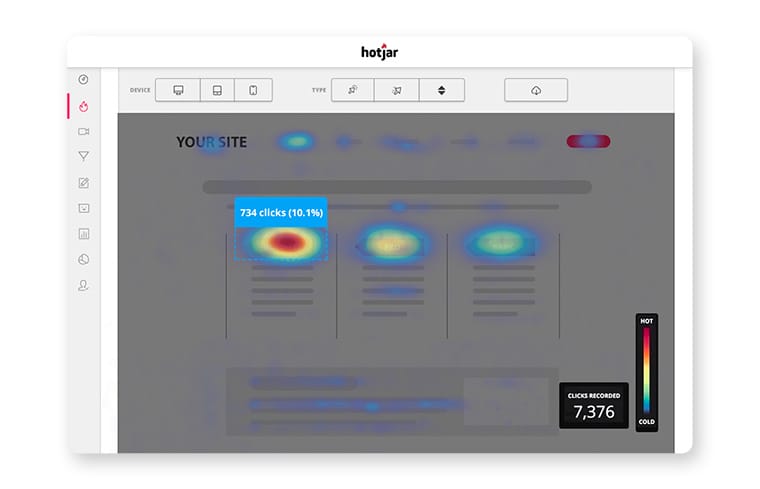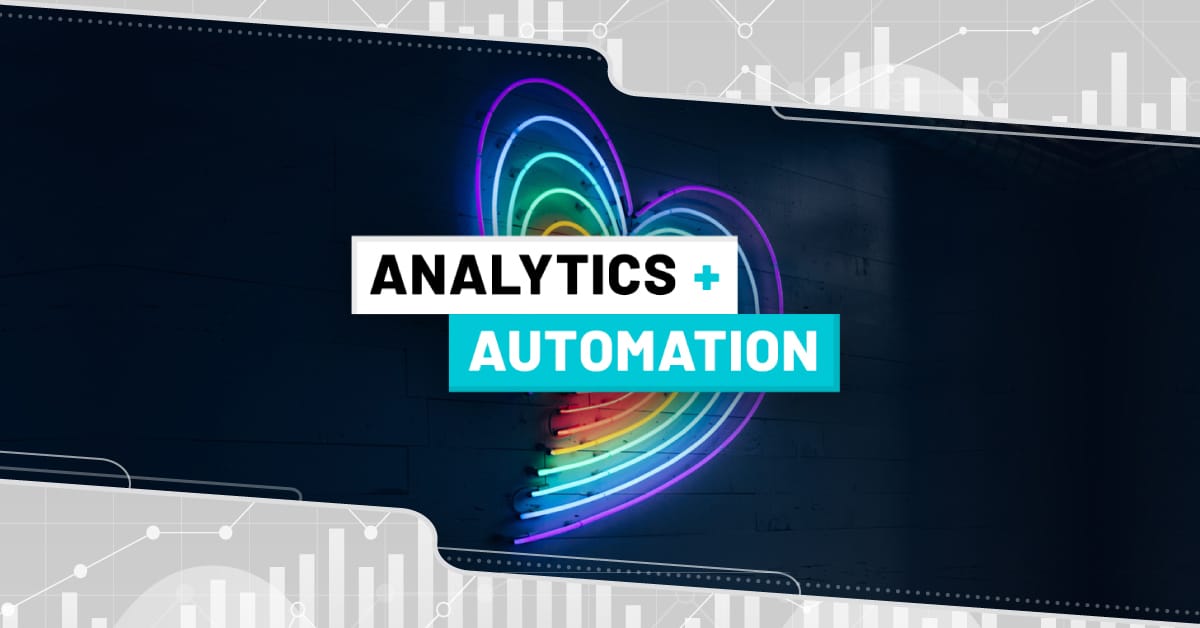As marketing teams face pressure to do more with less, automation and analytics continue to be vital tools for streamlining work and making data-backed decisions, especially in remote environments where clarity and consistency are essential. At TMP, we’ve operated remotely from day one, so we’ve seen first-hand how these tools can power smooth collaboration and more innovative marketing across distributed teams. That’s why we want to share insights into two key areas of digital marketing: marketing automation and analytics.
What is Marketing Automation?
Marketing automation comes in many forms but is essentially about setting up systems that work in the background to sell your products or nurture customer relationships without requiring constant manual effort. It’s not about replacing human input, but about supporting your team by handling the repetitive tasks so they can focus on strategy, creativity, and high-value work.
Popular tools like HubSpot, ActiveCampaign, and Klaviyo make it easy to build automated journeys across email, SMS, and web. Other popular tools to automate your marketing campaigns include Mailchimp, ConvertKit, and Omnisend for small businesses, while enterprise teams often turn to Salesforce Marketing Cloud or Adobe Marketo Engage. The right tool depends on your goals, budget, and the level of sophistication you need. When implemented effectively, automation allows you to streamline operations while maintaining a personalised experience for your customers.
How Marketing Analytics and Automation Help Your Business
With marketing analytics, you gain clear insights into what’s working (and what’s not) so you can refine your strategy for better results. While that might seem obvious, some of the data you can track might surprise you. For example, you can compare how return vs new customers behave, measure time spent on site and scroll depth, see which content people interact with before converting, or identify common drop-off points like payment or shipping pages. These insights help you make decisions based on evidence, not guesswork. With tools like GA4, you can now access real-time insights and track customer behaviour more comprehensively.
Here are just a few reasons why we’re passionate about marketing automation and analytics – hopefully, they’ll inspire you to explore their potential for your business. And if you come across any unfamiliar terms, don’t worry, there’s a handy glossary at the end to help.
Never lose track of a customer ever again.
By combining marketing automation and analytics, you can maintain close contact with potential customers at every stage of the sales journey – from initial interest to post-purchase – without manual effort.
Step 1: Capture Leads Automatically
The process begins with an effective lead generation strategy, such as offering a high-value resource (e.g., a brochure or whitepaper) in exchange for contact details. Once a lead opts in, you can trigger an automated email nurture sequence that educates them about your business and offerings.
Step 2: Automate Your Email Sequences
From there, it’s all hands-off, your leads are seamlessly fed into the sequence, receiving pre-scheduled emails at optimised intervals to guide them toward a purchase.
Step 3: Personalise Based on Customer Engagement
You can also track how engaged your prospects are, whether they’re opening emails, clicking links, or browsing your website. With this data, you can send highly personalised follow-ups based on their behaviour.
Step 4: Automate Follow-Ups After a Sale
Once a sale is complete, you can automate post-purchase emails to thank your customer, request a review, and offer exclusive deals (if relevant). This keeps engagement high and encourages repeat business.
Marketing Automation Best Practices
To get the most out of marketing automation, there are a few key practices worth following:
- Start with a strategy: Know your customer journey and what actions you want to automate.
- Keep it human: Use automation to enhance, not replace, the human experience—personalisation is key.
- Test and refine: Always monitor your campaigns and use analytics to improve them over time.
- Don’t overdo it: Too many automated messages can feel spammy. Aim for helpful, not overwhelming.
- Integrate your systems: Use platforms that work together, like your CRM, email marketing platform, and analytics tools.
Automate regular and repetitive tasks.
Think about the tasks you repeat daily, could they be automated? Whether it’s following up with leads, sending appointment reminders, or re-engaging past customers, automation can free up time and keep your business running smoothly.
Track everything (I mean everything)
If you spend a little time or money getting your analytics set up, you can learn so much more about how your business works online. Simple additions like UTM tags to your URLs can reveal where your traffic is really coming from and which campaigns are working.
You can track things like:
- Where your customers come from (Google, Facebook, email, etc.).
- How long they stay on your site.
- What pages they visit before making a purchase.
- Which traffic sources generate the most revenue.
- Where people abandon their shopping cart.
You might think analytics is ‘not for you’ if you’re not naturally a numbers person, but the things you can track are incredible – and if you’re invested in the business, you’ll love seeing those numbers move over time.
How to Use This Data
Adjust Your Marketing Channels
If Facebook ads aren’t converting, but Instagram traffic is generating more sales, shift your focus (and budget) to Instagram.
Fix Drop-Off Points in the Purchase Process
If customers abandon their cart after seeing shipping costs, consider offering free or discounted shipping. If they drop off at the payment page, you may need to streamline checkout or offer more payment options.
Improve Lead Magnet Performance
Your analytics might reveal an issue if you’ve created a lead magnet but no one’s downloading it.
- High landing page traffic but low downloads? The page layout or call-to-action might need improvement.
- Low traffic? Your promotion strategy needs work.
Tracking these insights helps you refine your campaigns over time. No successful strategy works perfectly from the start – it’s all about optimising based on real data.
Use Heat Mapping to Improve Your Website’s Performance
One of my favourite analytics tools is heat tracking. Tools like Hotjar or Microsoft Clarity show where users scroll, hover, and click. These insights can:
- If your pages are too long (and where users drop off).
- Whether your CTAs (calls-to-action) are easy to find.
- What elements attract the most attention.

Many heat map tools also offer on-page polls, allowing you to ask visitors questions like:
“Did you find what you were looking for?”
“Is there any information you still need?”
And don’t forget to check performance on mobile, CTAs often get missed.
The Power of Automation and Analytics: Real, Unbiased Feedback
One of the biggest advantages of marketing automation and analytics is that they provide impartial, data-driven feedback.
But when you ask real customers, the ones actively shopping for your product or service, you uncover game-changing insights that can boost conversions.
Key takeaway: Don’t guess what your customers want – use automation and analytics to find out!
If you’re not already tracking these insights, now’s the time to start! Even simple tools like Google Analytics or Meta Pixel can give you game-changing data about what’s working—and what’s not.
Want to go deeper? Book a quick call to see what’s possible for your business.
Digital marketing analytics & automation glossary
Lead generation — The act of bringing people (leads) into your orbit, and grabbing some details (like an email address).
Whitepaper — An example of a piece of content: a whitepaper is a report or guide, usually presented in PDF format.
Nurture sequence — A series of emails you’ll send to a lead over days or weeks, starting from ‘hi’ and going through to ‘buy’.
Email marketing platform — Services that send emails for you for a fee. Most have expanded into broader marketing services too.
CTA — Call to action: what you want the user to do once they’re on your site or reading your email e.g. ‘buy now’.
Landing page — A purpose-built web page that isn’t connected to the rest of your website. Serves one specific purpose.
Conversion — When you ‘1-up’ your leads – that could be getting a download, booking a meeting or making a sale.
